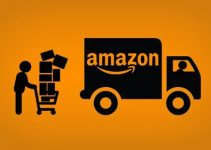Romania has long been a country of enterprise and endeavour, and a new wave of torch bearers is leading the way for local businesses. The country’s highly skilled, technical workforce has led to the creation of a booming tech sector, culminating in Romania’s first ever ‘tech unicorn’ (billion dollar company) earlier this year, the Bucharest-based startup UiPath.
Riding this wave are all sorts of businesses keen to take advantage of Romania’s growing reputation. Among them are numerous eCommerce businesses, who are looking to use Romanian software expertise to deliver a great online shopping experience to people around Europe. Here then are six of our top tips for Romanian eCommerce companies looking to expand across the continent, and how to turn local success into global superstardom.
Prepare to add European payment options
Different payment options for different territories. PayPal is relatively popular everywhere, but some countries prefer debit cards while others prefer credit cards, with many different ways to use these online. The Netherlands is dominated by local bank transfer platform iDEAL, while more than 80% of eCommerce merchants in Austria accept the similar EPS payment method. In Germany meanwhile people often demand to pay by invoice, where they can keep the product for up to a month before they pay for it.
Mobile eCommerce is also a huge growth area across Europe, and will benefit from supporting mobile wallets (e.g. Apple Pay) and options such as Visa Checkout. This is particularly crucial if you’re expanding into Asia rather than Europe, where mobile is by far the dominant platform for eCommerce. In China for instance, mobile wallets are often integrated with chat apps, with examples including AliPay and WeChat Pay.
Adapting your website to support local payment options is a vital step, both in ensuring that you don’t exclude potential customers and making yourself look like a ‘native’ business. The less tailored your eCommerce site is to local customers, the less convenient it is, and the more it will seem like an external enterprise. Including local payment options shows you understand and are committed to the local market, making your platform appear more trustworthy.
Take advantage of Amazons Pan-European FBA
If you’ve been selling products around Europe from your Romanian base, you will already be aware of distance selling thresholds. What you may not be aware of is Amazon’s Pan-European FBA scheme. If you sell your products on Amazon, the Pan-European FBA allows you to take advantage of one-day or even one-hour Prime delivery across eight European nations.
When you enroll in the Pan-European FBA, Amazon distributes your stock evenly between all of its qualifying European warehouses. Local customers then get to choose Prime delivery for your products, instead of having to wait for them to be shipped from your local Amazon fulfilment centre. When you have the choice as a Prime member between two products, one of which will arrive more quickly, the option is fairly self-explanatory. Having Prime delivery puts you in that conversation, and makes it much more likely that a Prime member will choose your product.
If there’s an obvious issue with this system, particularly for a small business, it’s the effect the Amazon FBA system has on VAT payments. Because your goods reside in several countries instead of being shipped to them, sales in those countries will no longer qualify for tax-free distance selling thresholds. Instead, you’ll be forced to register for and pay VAT in all eligible countries. We provide an affordable and hassle-free option for VAT registration in all of these territories, and can direct you to software that’s ideal for managing these VAT responsibilities.
If you want to ease this initial burden of VAT payments, you may want to look at Amazon’s Multi Country Inventory (MCI). This system allows you to choose one European fulfilment centre at a time to test out your products on Prime. For example, if you base yourself in Germany, the MCI would allow you to send stock to Amazon UK’s fulfilment centre and make them available on Prime there. This would mean registering for VAT in the UK alone, which you may find to be more manageable, and an easier process as an English speaker.
Consider cultural differences
Payments are just one element of tailoring your eCommerce offering to another country or region. If you’re on Amazon or a local eCommerce platform, this may be as simple as having a well-translated product description. However, it’s also likely that you will have to make an effort to distinguish your product from local competitors, and establish your brand as a reliable and high quality presence.
This can go one of two ways: either you try to integrate as best you can, or you play on your status as a foreign business. If the country you’re expanding into has a strong perception about Romania, you may wish to overturn it with a strong marketing campaign, or even make light of it in a humorous way. Otherwise, it may be better to demonstrate your commitment to and investment in the local area. Hiring locally will be a good start, particularly at management level, as they will be able to provide pointers on what will work best in that region.
This can be an ideal opportunity to refresh and rebrand, too. If the country you’re expanding to has no perceptions around your business or product, you can use it as an opportunity to take a completely different approach, and repitch yourself to a new audience. Again, it’s recommended that you work with a local marketing agency if you’re planning a big push. They will help you to avoid anything getting lost in translation, as certain things that are popular in Romania may not translate, and sayings or phrases could have unintended meanings or connotations.
Study the competition
As well as battling unfamiliarity, you’ll also be battling any number of local competitors. As well as having a headstart on your business, they will be more familiar with the local business landscape, and will be able to capitalise on any mistakes you might make. However, this is not to say that there are no advantages for an expanding Romanian business. Your technical expertise as an agile eCommerce startup and your outsider status will both be invaluable to disrupt the local industry.
Many existing eCommerce sites have been in a dominant position for some time, and may have outdated platforms with a poor user interface and experience. They may also not have made the transition to mobile yet, with a legacy of loyal, older customers still shopping predominantly on desktops. Given Romania’s strength in software engineering, it may be that you can outshine the competition with your eCommerce website.
With many platforms running on familiar but outdated software or simple WordPress plugins, tech talent could distinguish your business by providing a unique shopping experience. By delivering an eCommerce experience that’s optimised for desktop and mobile and uses the most modern principles of UX, you will immediately set yourself apart as a high quality offering.
Look too at what they are selling, and how they are selling it. While some products have universal values and appeals, others do not – and marketing can differ dramatically from region to region. Certain products you sell may not appeal to a different market, or may have an entirely different audience. The benefits of the product and the details that reassure people will also vary, depending on what people think is important in that product. For instance, some markets will value energy efficiency more in electrical appliances, while others would want to know how powerful it is or how good it looks.
These are just a few tips to get over the potential culture shock of expanding your business, and to help you quickly tailor your amazing products to a new audience. With high English literacy, incredible talent and a great work ethic, though, Romanian eCommerce businesses are already perfectly positioned to take over Europe, and set their sight on global domination.




